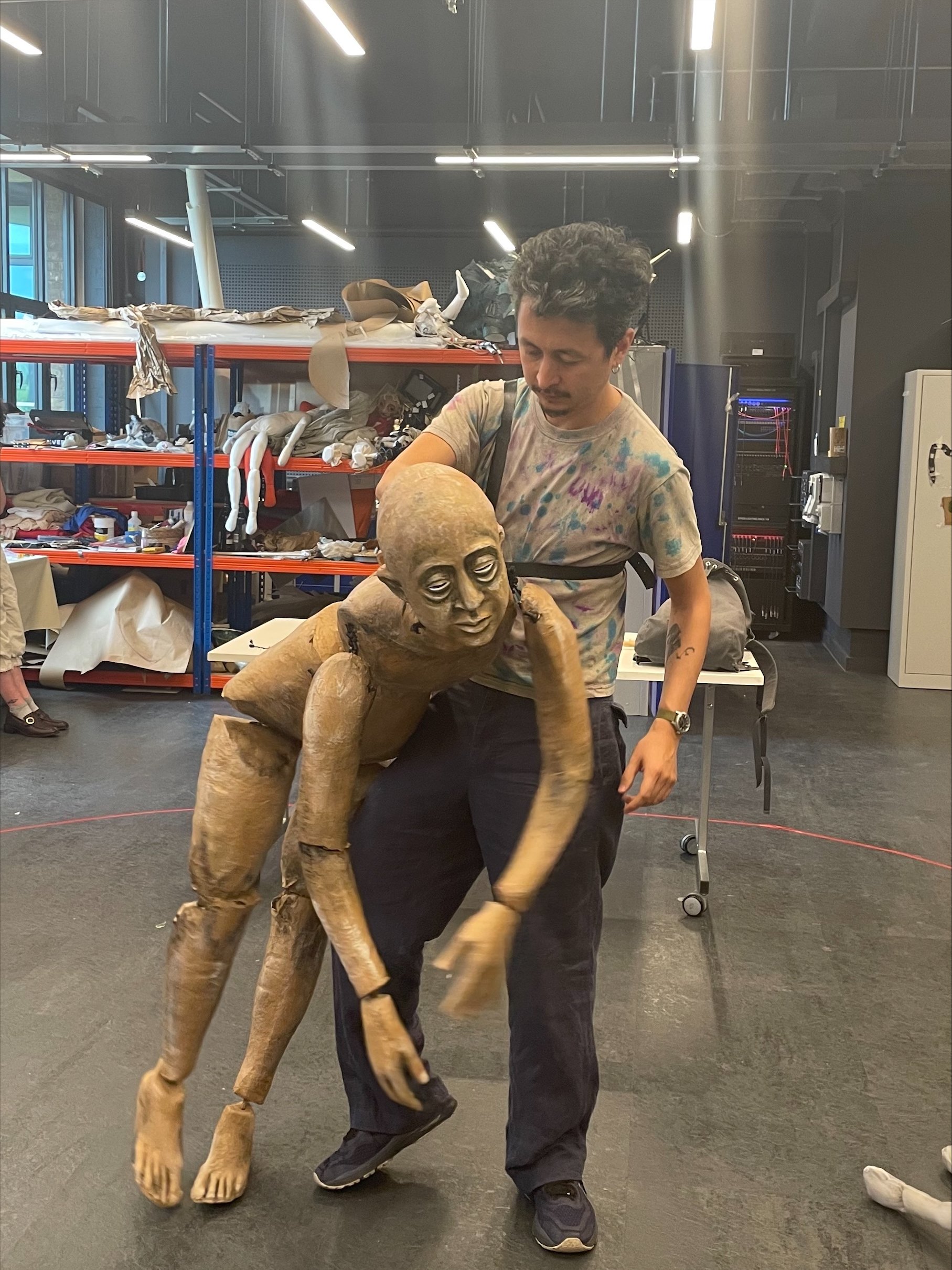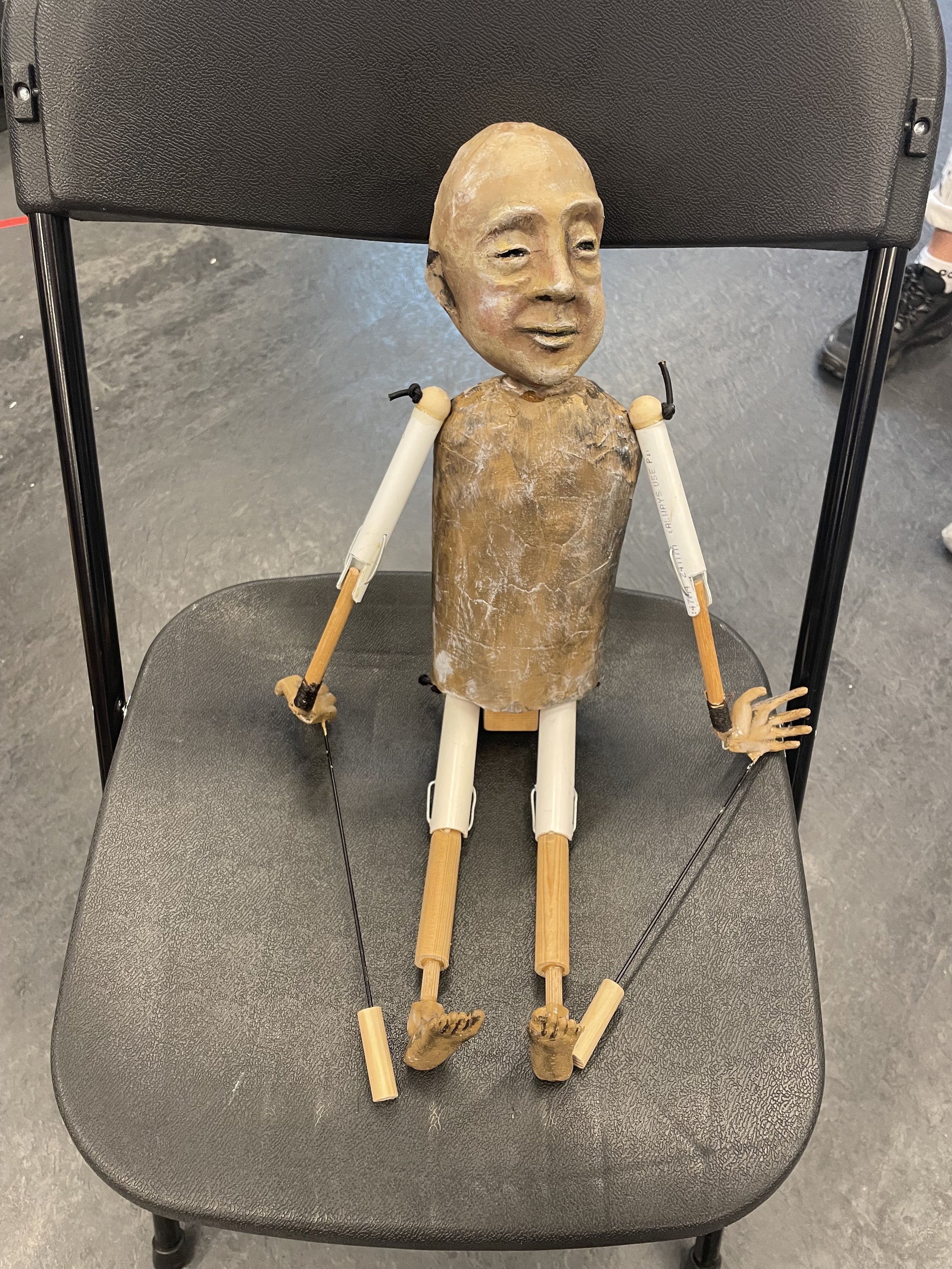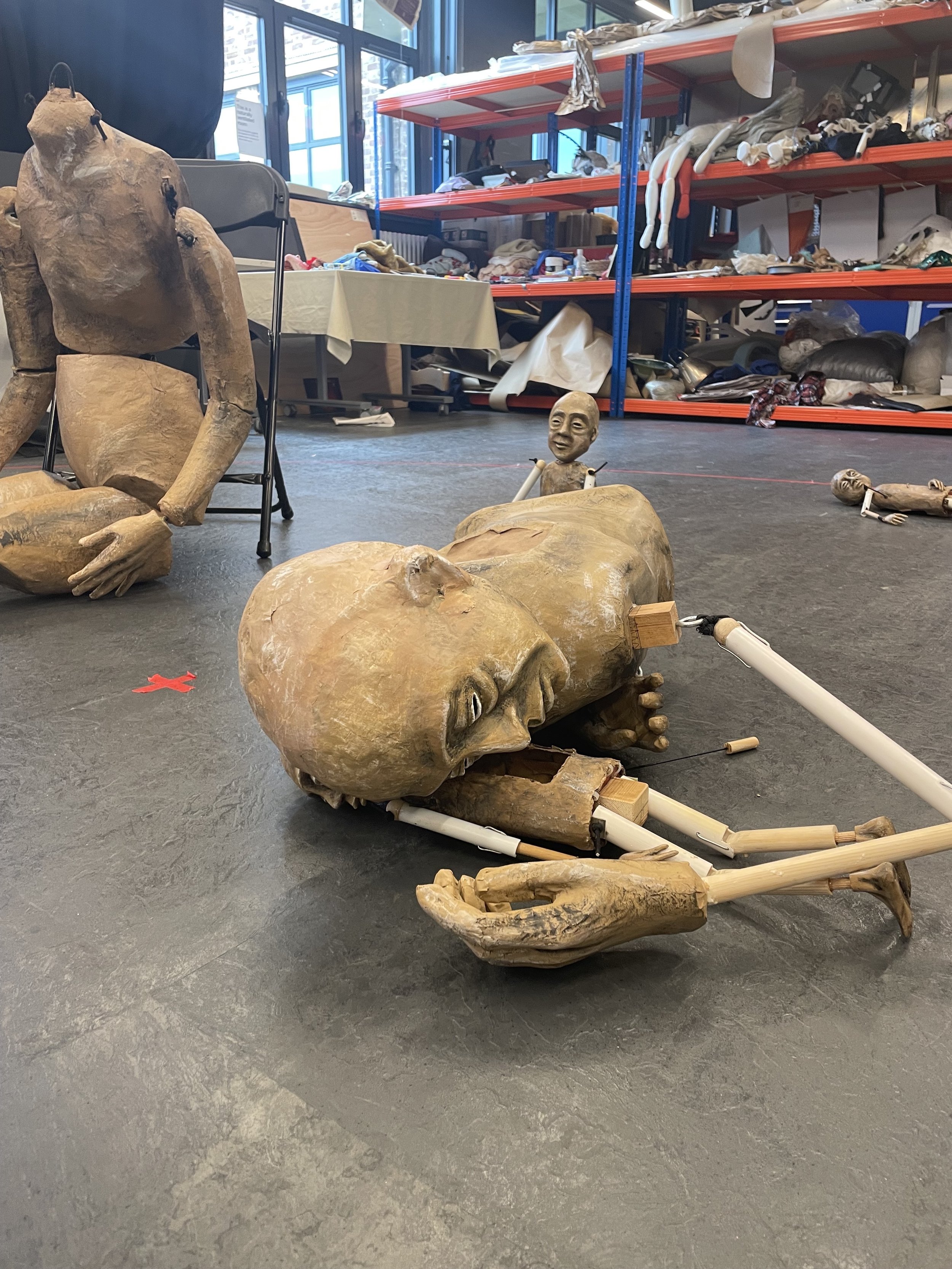The Lonesome Death of Eng Bunker

Performance dates
17-21 Sept 2024
7:30pm Omnibus Theatre
Post show Q&A: Wed 18 Sept 8:30pm with Tobi Poster-Su and Iskandar Sharazuddin.
Content Warnings:
This performance contains loud sounds, flashing and strobe lights. This performance references racism and radical oppression and includes sexual references.
Age Recommendation: 14+
Experience puppetry, music and striptease in this gothic horror story about siblinghood, diaspora and the brutal cost of assimilation.
Presented by Wattle and Daub with Kakilang
On January 17th 1874, Eng Bunker woke to discover his brother Chang was dead. The twin brothers, Siamese immigrants and entertainers who had carved out an uneasy space in the rotten heart of the American dream, were conjoined by a band of cartilage and shared a liver. This is the story of Eng’s final hours; alone for the first time in his life.
Using puppetry, music and striptease, this is a gothic horror about siblinghood, diaspora and the brutal cost of assimilation; about being entirely alone in the universe, and about waking up chained to a dead body.
Commissioned by Kakilang and supported by Arts Council England National Lottery Project Grants.
Creative Team:
Writer/Performer: Tobi Poster-Su
Director: Iskandar Sharazuddin
Associate Director: Rebecca Goh
Set and Costume Designer: Erin Guan
Set and Costume Design Assistant: Janne Legaspi
Lighting Designer: Cheng Keng
Sound Designer and Composer: AJ Turner
Composer: Tom Poster
Movement Director: Jasmine Chiu
Puppet Designer and Maker: Aya Nakamura
Puppet Maker: Kayla Teodoro
Puppet Making Assistant: Jennifer Dingwall
Assistant Puppet Maker: Bok Li and Katya Markson-Matthews
Stage Manager: Vivi Wei
Production Manager: Brent Tan
Producer: Natalie Chan
Unveiling Hidden Stories Through Puppetry:
Exploring Race and Identity in Tobi Poster-Su’s Chang and Eng and Me (and Me)
Rethinking Puppetry: More than Child’s Play
When most people think of puppetry, they may imagine whimsical childhood entertainment or quaint performances. But what if puppetry could offer a deeper exploration of complex social issues like race, identity, and representation? That’s exactly what UK-based theatremaker and scholar Tobi Poster-Su achieved with their groundbreaking performance, Chang and Eng and Me (and Me). In this post, we’ll take a closer look at how Tobi uses puppetry to reflect on the lives of the famous Siamese twins, Chang and Eng Bunker, and in doing so, challenges the ways we perceive identity and race.
Tobi Poster-Su is a unique figure in the world of puppetry, bringing a rich background of cross-disciplinary work to their art. As co-artistic director of Wattle and Daub, they’ve co-created and performed in several innovative productions, such as The Depraved Appetite of Tarrare the Freak and Triptych. They’ve also collaborated on well-known shows, including A Christmas Carol at the Bristol Old Vic and My Neighbour Totoro at the Barbican. With their academic work focused on puppetry’s role in material performance and racialization, Tobi’s approach goes far beyond traditional puppetry, using it as a lens through which to question societal norms and stereotypes.
-
Description text goesAt the heart of Chang and Eng and Me (and Me) is the story of Chang and Eng Bunker, the conjoined twins from Siam who became famous in the 19th century as the “Siamese twins.” Born in 1811, Chang and Eng’s lives were far more than a spectacle of their physical condition. They became naturalised U.S. citizens, married American sisters, and raised families while running a farm in North Carolina. Yet, their fame and status as immigrants brought them into the larger conversation about race in America, especially during a time of evolving attitudes towards Asian immigrants. here
-
By using puppetry to explore Chang and Eng’s story, Tobi Poster-Su examines the deeper layers of how race and identity are constructed. In Chang and Eng and Me (and Me), the manipulation and eventual dismantling of the puppets represent how identities are formed, performed, and deconstructed by society. Tobi’s puppetry asks us to think about the fluidity of identity—how it is shaped by both internal and external forces, and how it can be distorted through racial and cultural stereotypes.
This manipulation is not just a storytelling tool; it’s a metaphor for how marginalised identities are often treated by society. Puppets, in this context, become more than mere figures on a stage—they symbolise the complex power dynamics at play in the representation of marginalised people, particularly Asian and immigrant identities. Tobi’s performances, including Chang and Eng and Me (and Me), invite audiences to consider how these representations both reflect and shape societal attitudes.
-
At the core of Tobi’s work is the idea of “critical puppetry,” an approach that uses the art form to critique and resist constructed identities and hierarchies. Through the act of physically constructing and deconstructing puppets, Tobi visualises how identity is manipulated and controlled. This concept pushes puppetry beyond simple performance, transforming it into a potent medium for challenging societal norms.
-
But how does this play out in the story of Chang and Eng Bunker? Puppetry allows Tobi to reimagine the twins’ lives in a deeply personal and reflective way. By portraying their experiences through puppets, Tobi emphasizes the vulnerability and strength in the Bunker twins’ story, highlighting the tension between personal identity and the societal forces that tried to define them. Chang and Eng’s journey from Siam to America, their marriages, and their lives as immigrant farmers all serve as a mirror for examining the racial challenges that persist today.
This unique approach to storytelling allows puppetry to do something more than retell history. It brings audiences into a space where the past and present collide, prompting us to reflect on ongoing issues of race, identity, and representation. The symbolism of constructing and dismantling puppets becomes a way of questioning how identities are built up by society—and how those same identities can be torn down or misunderstood.
-
Tobi Poster-Su’s work exemplifies the power of puppetry as an art form that can reach far beyond entertainment. By delving into historical narratives like those of Chang and Eng Bunker, Tobi challenges us to rethink the ways we engage with history, identity, and marginalized communities. Their work with Chang and Eng and Me (and Me) opens the door to critical conversations about representation and race, demonstrating that puppetry can be a medium for both artistic and social change.
Thanks for joining us on this journey into the world of puppetry, history, and critical reflection. We hope this exploration of Chang and Eng and Me (and Me) has shed new light on the powerful role that puppetry can play in shaping our understanding of complex social issues. Follow Tobi on Instagram @tobipostersu and on X (formerly Twitter) @tobipostersu for updates on his upcoming work.
Watch the R&D process of Chang and Eng and Me (and Me)
Click to view full timeline.
Credit: Rebecca Goh - Associate Director









Project Partners






